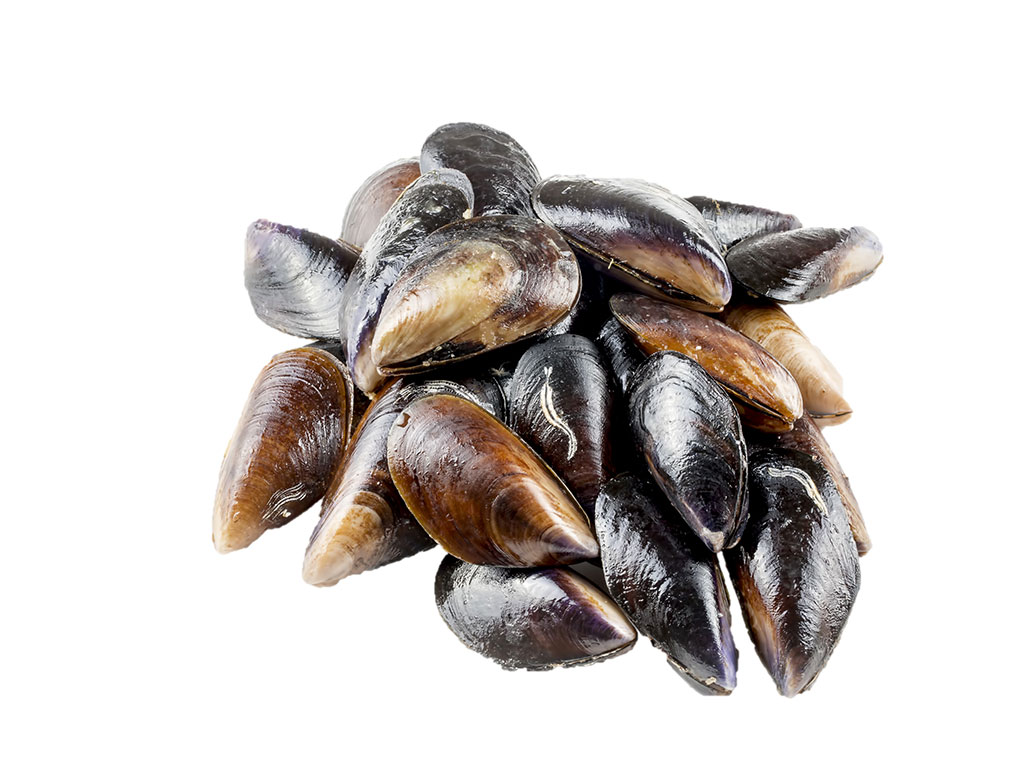
Mussel
lat. Mytilus galloprovincialis
Mussel
Mussel has two identical, oblong valves . The shell is dark blue, almost black from the outside and fair pearly colored inside. The two are firmly connected by elastic hoop 6 -8 cm long that hides soft tissue. They live in clusters on underwater cliffs, pillars or hang connected by fine strings secreted by one of its internal glands.
Wild mussels can be found on many areas along our coast such as Novigrad sea, Šibenik passage, Mali ston and Pula bay, Limski passage. Mussels are bred in farms and the proces takes 3 -3.5 years. They feed on plankton and are harvested from October to May.
Energy value of 100g of fresh mussels is 66 kcal/276 kj of what 2% is carbohydrates, 1.9% is fat and 12.1% proteins.
Mussels are valuable source of minerals: iron (3.95 mg which is 28% of recommended daily intake), phosphorus (197 mg which is 24% of recommended daily intake) and selenium (44.8 μg ,i.e. 82% of recommended daily intake). In addition, they are rich in calcium, iodine, potassium and sodium.
Vitamins contained in mussels are vitamin A, vitamin C and folic acid. They are a valuable source of cyanocobalamin (B-12)- contain as much as 12 μg what exceeds recommended daily intake five times. In addition, mussels are rich in other vitamins and a good source of B complex. There is 0.16 mg of thiamine (B1) what is 13% of recommended daily intake, 0.21 mg of riboflavin (B2) what is 16% of of recommended daily intake and 1.6 mg of niacine (B3) what is 16% of RDA.
Mussels are also rich in omega 3 fatty acids and saturated fatty acids.











